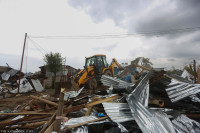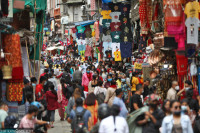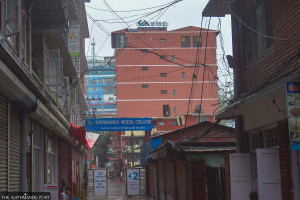Opinion
All aboard
Discourses around transport planning should consider the ‘mode’ rather than ‘place’
Amit Bhattarai
Barring a few exceptions like SajhaYatayat, a vast majority of public transport needs in the Valley are being provided by private operators. What’s more, the government's involvement when it comes to managing public transports is limited to route distribution. Private vehicle usage is an all time high and is being dominated by two wheelers. In recent years, the rise of middle-class economy has given easy access to private vehicles. However, road networks have not expanded significantly in the last decade or so. According to a report by JICA, the total number of registered vehicles in Kathmandu Valley alone has increased from 152,162 in 2000 to 570,145 in 2010. That’s almost 300 percent increase in 10 years’ time.There is no doubt that we need a mass transit solution for Kathmandu Valley to address these problems but the solution needs to be ‘fit for purpose’ and benefits should clearly outweigh the cost involved.
Around the world, metro rail is one of the most popular modes of mass transit due to its reliability, frequency. In global cities like Singapore, Hong Kong, Tokyo and New York, metro rail plays a crucial role in the movement of people. However, metro is one of the most expensive mode to build and operate. But the success of metro rail in New Delhi is a good case study to show that even though its expensive to build, if a city has the required density and ridership, it will pay off, eventually.
Light rail is not a people mover per se but has been a success in European cities for doing short trips in inner cities. Monorail, as the name suggests is also a lighter version of metro rail which runs on a single track, mostly elevated. In recent years, monorails have been popular in smaller cities, especially in China, but their ability to carry mass is limited. Route expansion is one of the biggest challenges identified for monorail network globally.It can be highly efficient for short distance travel such as between terminals at airports but expanding it over a longer distance is regardedas inefficient. It is worth noting that the maintenance cost for monorail is highly expensive and their life span is about 20-25 years, much less than other modes of rail. Sydney in 2013 got rid of its only monorail network citing poor cost recovery and ongoing maintenance and operational costs after only 25 years in service.
Bus Rapid Transit as it is popularly known is the most cost-effective transit mode if planned properly. Originally started as a cheaper alternative to a metro rail in Curitiba, Brazil, Bus Rapid Transit has been very popular in developing cities due to its ability to leverage on the existing infrastructure and relatively inexpensive capital investment. So the catch here is that instead of prescribing a mode, any solution for Kathmandu must be ‘fit for purpose’. Transport planning traditionally has been very much ‘mode’ focus and top down. Lately, however, we are seeing a new discourse where planners are putting more emphasis on a ‘place’ rather than a ‘mode’. A ‘place’ can be supported by number of different modes and thus engaging in a discussion about what mode is right for the Valley has become obsolete. Also, a metro rail is only good if it is supported by other modes of transit as rail can’t go to everyone’s doorsteps unlike microbuses or motorcycles in Kathmandu’s case. Designing a metro rail is not the ultimate solution for Kathmandu’s traffic woos if people can’t get to metro station easily both at the origin and the destination.
Fundamentals of transport planning show that people prefer to walk only up to 800m radius from a metro stop. Anything greater than 800m, you would need other modes to support to make metro rail still attractive. So instead of just planning a ‘mode’ our focuses should be on designing an integrated network where buses, micro buses and mass transit all compliment each other.
We can learn from what Sydney is doing to support its second airport about 50 km away from the city center. To provide public transport access to the new airport from the suburbs, transport planners are proposing to build a guided automated bus rapid transit for the initial years when the passengers flow is relatively low. Eventually, when the passengers flow is increased, the same corridor is proposed to be converted into a rail corridor and this is what I think will work best for the Valley too. Instead of investing heavily on metro or other forms of rail until we are absolutely sure what the patronage would be in future, we should start with a Bus Rapid Transit network with dedicated corridors and when the ridership is sufficient, we can convert these into rail corridors, one by one.
Bhattarai is an urban planner by profession and works as a Senior Infrastructure Planner for a state government agency in Australia. He can be reached at amit.bhattarai@gmail.com




 22.46°C Kathmandu
22.46°C Kathmandu












